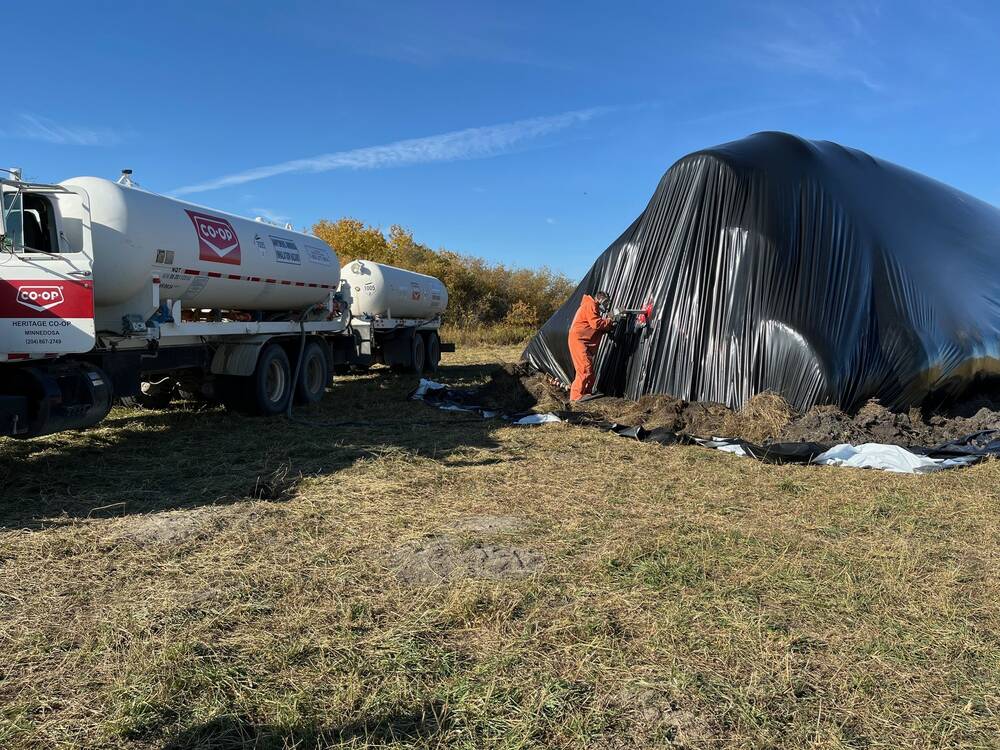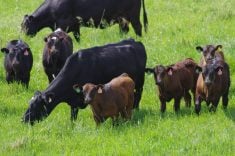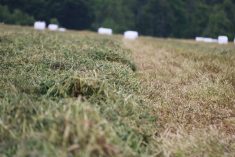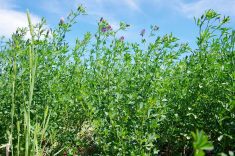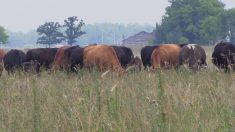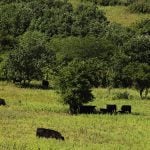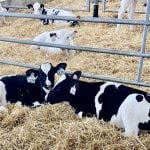Anhydrous ammonia has long been a critical input for Manitoba’s field crops — now it’s also increasingly finding its way onto livestock operations as a feed enrichment strategy.
Molasses has historically been used to enrich lower value forages, but when used safely, farmers are finding anhydrous ammonia can be a better option.
Ammoniation can increase forage digestibility 10 to 30 per cent, boost forage intake by between five to 20 per cent, increase crude protein, and reduce spoilage of high moisture forages, according to Shawn Cabak, a forage and livestock specialist with Manitoba Agriculture.
Read Also

Hands-on with agriculture draws students to AG EX
Urban students flock to MooMania and EweMania at Manitoba AG EX 2025 to get a taste of cattle and sheep production and where their food comes from
On Oct. 9, Manitoba Agriculture held a forage ammoniation workshop at the Manitoba Beef & Forage Initiatives (MBFI) Brookdale farm. Interested producers gathered to hear how to safely handle anhydrous ammonia and how it can benefit their damp hay or improve the feeding value of their low quality forages.
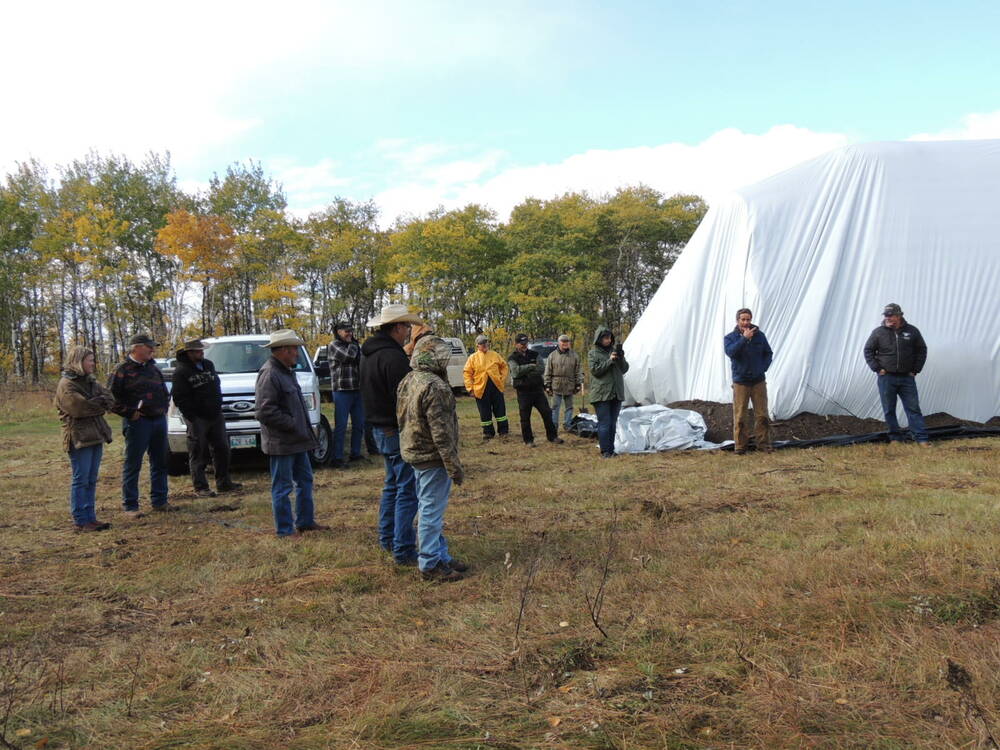
Why it matters: While anhydrous ammonia boosts forage quality, improving digestibility and protein content, safe handling is essential to help producers enhance feed while minimizing risks.
The day began with a reminder that this product is safe when used properly, but does require following safety protocols.
“Working with anhydrous ammonia requires a high level of care and precaution to follow so no one’s injured,” Cabak said at the beginning of the workshop.
The science
Ammoniation boosts the crude protein in feed and improves the feed value mainly by helping break down the lignin, a material deposited in the cell walls of plants, making it more digestible. It also incorporates the ammonia into the plant structure itself, which ruminants can use to synthesize microbial protein.
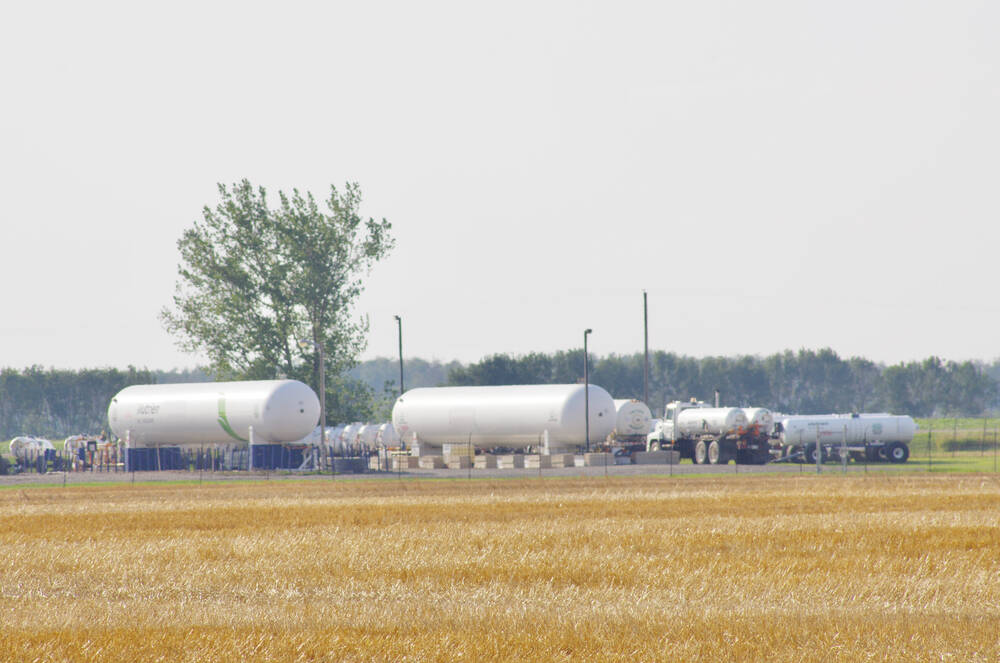
It also works as a preservative, allowing farmers to harvest their forages at higher moisture levels and preventing bacteria and mould growth while keeping more plant nutrients intact during storage. Producers who choose ammoniation also benefit from reduced field harvesting losses and aren’t as dependent on the weather.
Several factors affect the ammoniation process, including the amount of moisture in the roughage, when the ammoniation takes place, temperature and the amount of anhydrous ammonia that is applied during the ammoniation process.
Since anhydrous ammonia binds itself to water molecules in roughage, if there’s not enough moisture the feed value cannot improve. Through ammoniation, fibers that improve the energy of the feed break down, turning a soft caramel colour with a softer texture.
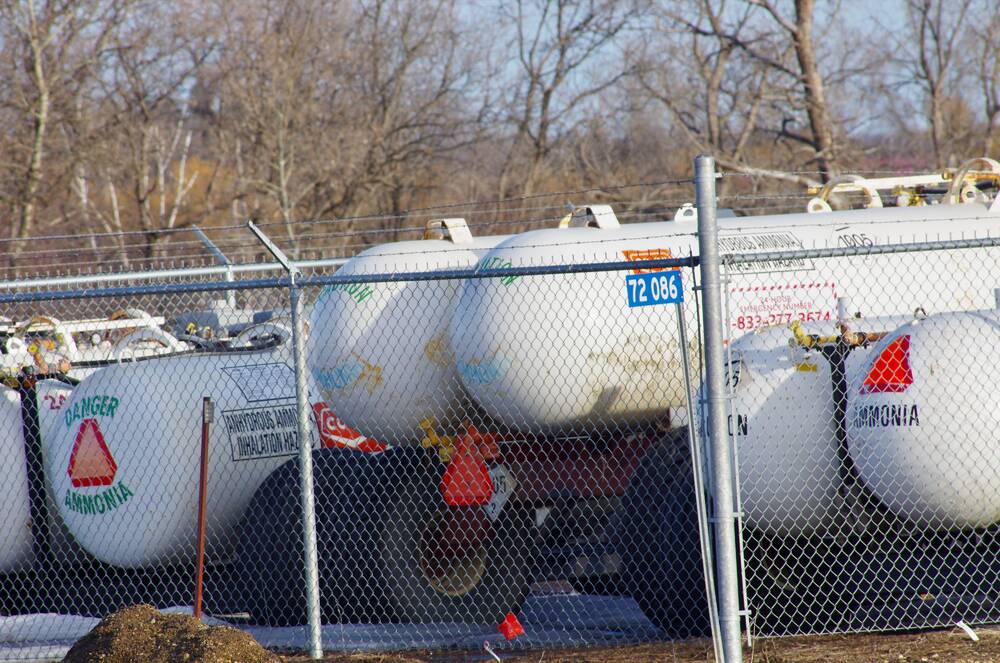
Before ammoniation, producers should take a sample of their roughage and analyze it for moisture content, which should not be lower than 12 per cent. The level of moisture will directly relate to the amount of ammonia that must be added.
High moisture hay can benefit from being preserved with ammonia. The hay should be stacked and ammoniated as soon as possible, since heating can begin at once. Producers should be mindful to only bale the amount of feed that they can stack, cover and ammoniate in one day.
Temperature is crucial during ammoniation, as it can determine the speed of the process and the extent of improved digestibility. While higher temperatures cause faster reactions and a bigger increase in digestibility, when the temperatures dip down, more time is required to complete the process and the increase in digestibility isn’t as successful. The improvement in crude protein content depends on the amount of anhydrous ammonia applied to the forage.
Manitoba Agriculture ammoniation tests show an increase in crude protein from 85 per cent to 125 per cent after ammoniation at three per cent forage dry matter.
Crude protein in barley straw went up from 5.1 per cent to 9.4 per cent after ammoniation; wheat straw went from 4.2 per cent to 8.6 per cent; oat straw from 3.2 per cent to 7.2 per cent; slough hay from 8.2 per cent to 15.8 per cent; and wheat chaff from 7.4 per cent to 12.7 per cent, according to figures from the province.
Crude protein content should be analyzed before and after ammoniation, since these numbers are critical to create balanced rations.
Total digestible nutrients (TDN)s also go up when roughage is ammoniated, and these increases are determined by in vitro analysis.
To determine the amount of ammonia that needs to be applied, find out the dry weight and type of forage that is being worked with. The moisture content is also essential, as is the weight of the bales.
When used to improve protein content of low quality forages, ammonia should be added at three to five per cent of the dry matter weight. When applied as a preservative for high moisture hay, that can be decreased to two per cent of forage dry weight.

Making it work
After producers have decided to go the ammoniation route, they need to ensure that their roughage can be easily accessed by the anhydrous tank and various other necessary farm equipment. They can either ask a retailer to bring an ammonia wagon out if they are certified to handle anhydrous ammonia, or the retailer can do the entire job, said Greg Dunn from the Heritage Co-op in Minnedosa.
“If you’re doing it for the first time, always ask your retailer to come out and run you through all the safety valves and everything, so you know what valves to shut off, what valves to turn on,” Dunn said.
Ammoniation should occur in a sheltered location to reduce the changes of wind damage to the plastic and damage to the ammoniated forage. The area should be well-ventilated, and the stack should be located apart from existing buildings. Stacks should be placed two to three metres apart so that the ammonia doesn’t become trapped. Safety is of utmost importance, as air and anhydrous can be explosive. No smoking or lighting of flames should be allowed anywhere near the area.
Everyone involved in the ammoniation process or in the surrounding area should wear tight fitting, unvented goggles and rubber gloves. Containers of water that are easily opened should be on hand to flush any gas from eyes or skin if a spill happens.
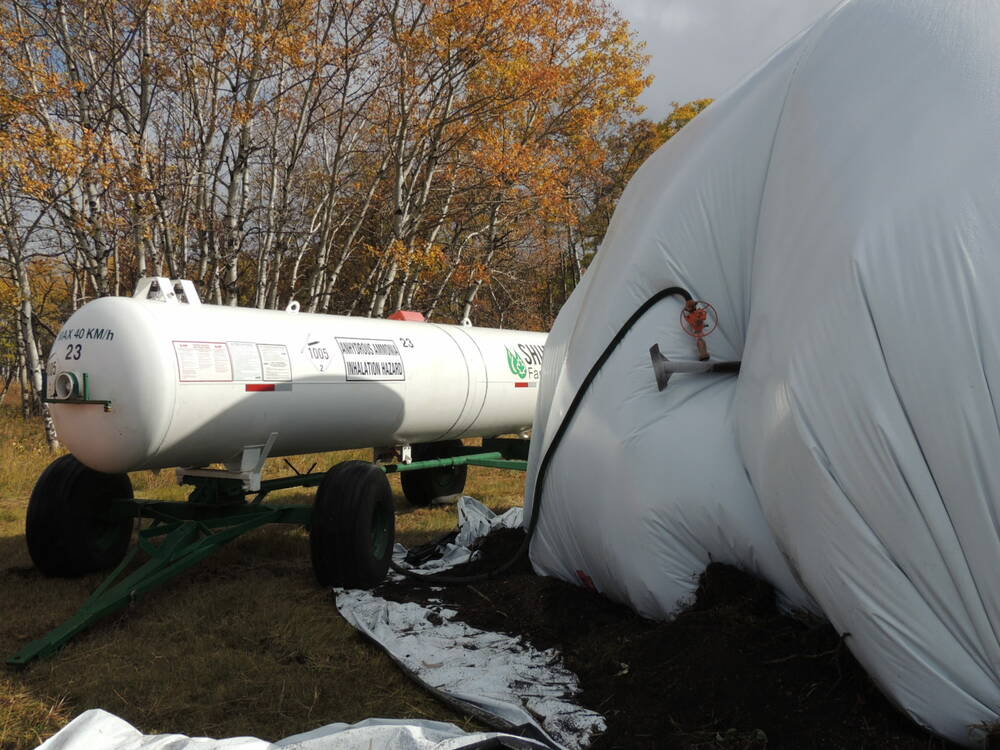
“If you get some in your eyes, get some on your skin, we can get [water] on you, and hopefully get you to a larger body of water, whether it be a garden hose, whether it be a water trough. Always have a bottle of water close by,” said Greg Dunn from Heritage Co-op in Minnedosa.
Protective equipment – like goggles, gloves and coveralls or rain gear — should be checked to ensure they contain no rips, cracks or tears, Dunn said.
The forage should be stacked to fit sheets of five to six millimetre black polyethylene plastic. Dimensions of the stack should be checked to ensure the plastic will cover everything. The black side of the plastic should face out to create higher temperatures and improve the process of ammoniation.
Once the stack is covered, it should be made secure and airtight, with any holes covered with tuck or duct tape. Secure the plastic sheet against the ballooning affect that will occur during ammoniation, allowing for a minimum of one metre of plastic from the edge to be weighted down with loose dirt, sand or manure.
When everything is sealed and ready to begin, two-to-three-inch diameter iron pipes, around six and a half metres long, are used. Half centimetre diameter holes are drilled into the pipe at 16-inch intervals, and a special adapter attaches the pipe to the ammonia source. The point of entry should be airtight, with loose plastic taped to the pipe.
Then, ammonia gets dispensed from a truck or a tank on a trailer. Half an hour after the ammonia has been added, the pipe is capped and left in the stack, or taken out and the hole resealed. It’s important to stand away from the stack during ammoniation. Smelling some ammonia around the stack, however, is normal during the ammoniation process.
Keep stacks covered for at least four weeks, and longer if it’s later in the fall and the weather is colder. The plastic can be pulled off the stack into the wind, or the sides can be cut to allow the air out. Then, remove the plastic a few days later, when the wind is blowing away from the rest of the farm. After this, keep the straw covered until just a few days before it is used. Use within four to five weeks to cut down on weathering and secondary fermentation nutrient losses.
As a source of non-protein nitrogen, ammoniated forage should not be fed with other feedstuffs that contain it. Only use ammoniated crop residues and poor quality forages in well-balanced rotations according to feed analysis.


